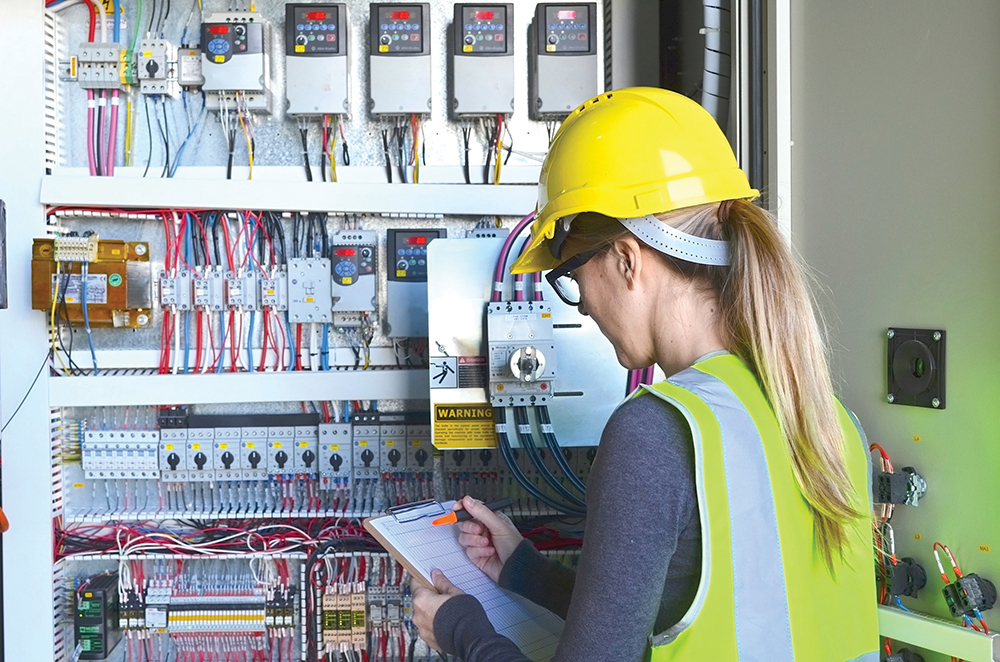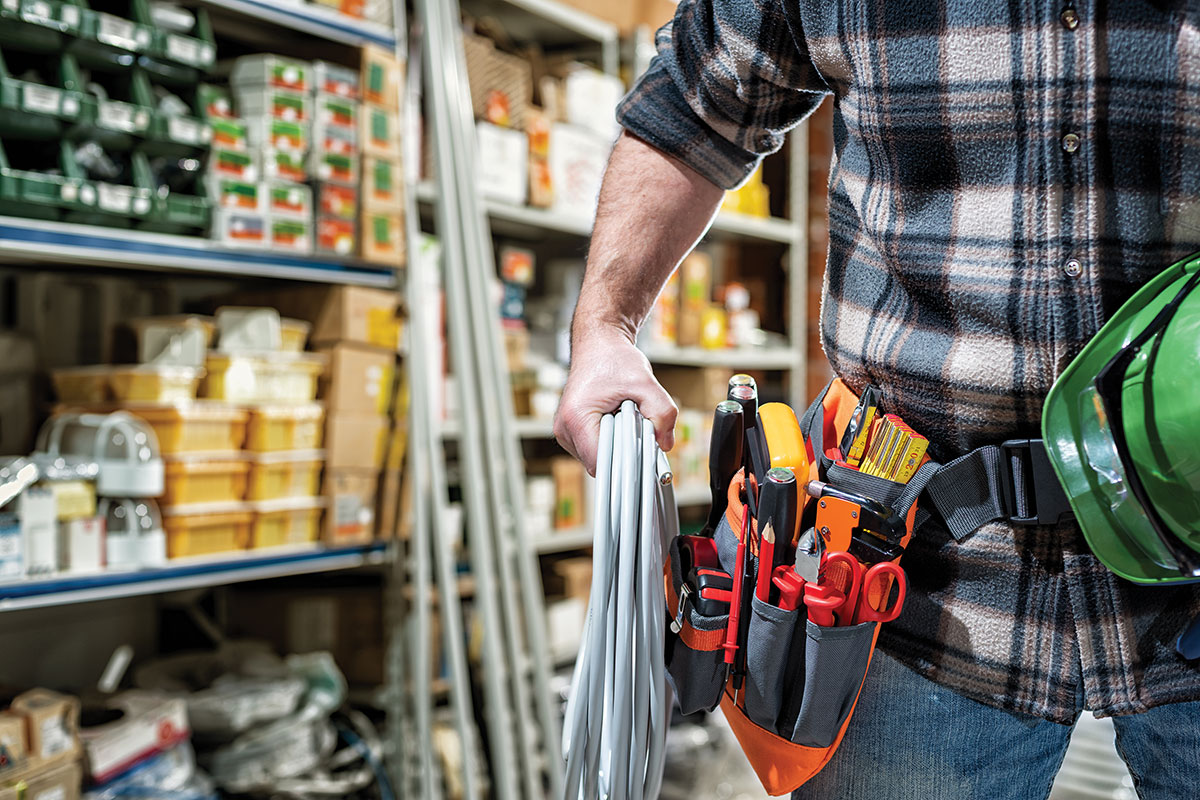A proper electrical inspection can quite literally be the only thing that ensures whether a building or home is safe from an electrical standpoint for those occupants. After the last screw has been turned by the electricians, and the phone call has been made, electrical inspectors are the final piece of the equation, confirming whether the electrical system is safe, or not safe. I know because I have been right there with you the past 16 years as an electrical inspector performing those same inspections. That includes five years as the chief electrical inspector in the state of Michigan where my role had me managing electrical inspectors all over the state, verifying the safety of electrical installations, as well. I also entered the industry as an apprentice electrician and have held an electrical license for 30 plus years, giving me a unique perspective of being both the inspector and inspected. One thing I have come to understand in all my years is that, just as an electrician needs the proper tools to do their job, an electrical inspector needs to have the proper tools as well.
When we think about electrical tools the initial thought is likely around hand tools like a screwdriver, lineman pliers, electrical tester, or flashlight. But are those all the tools an electrical inspector would need? No, they also need a print version or digital access through NFPA LiNK™ to the applicable National Electrical Code® (NEC®) for the area being inspected, as well as any other local code amendments or other applicable building or life safety codes that apply. Some other tools inspectors need that may not initially be thought about are safety tools like hard hats, safety glasses, and a high visibility vest, to name a few. There are also intangible tools like an inspector’s vision, their attention to detail, knowledge for applying codes, understanding installation methods, and communication. To be able to perform a thorough inspection, leaving the job free from electrical hazards, most of these tools will need to be used in some way.
Utilizing physical tools is clearly a necessity for electrical inspectors to accomplish several different areas of an inspection. Sometimes it is necessary to use a screwdriver or nut driver to gain access behind plates and covers, to see the quality of the wiring within or behind certain components. Flashlights are used regularly to clearly see the wiring and equipment in often dark areas, such as attics and crawlspaces. Distinct types of electrical testers can be utilized by inspectors to evaluate items such as voltage, ground-fault circuit interrupter (GFCI) and arc-fault circuit interrupter (AFCI) functionality, as well as open grounds, reversed polarity, and other types of improper structural wiring. It is important that inspectors know when and how to use the right tool in the right application. For example, voltage meters are rated for specific voltages and using an improperly rated meter to test a higher voltage could put an inspector at an extremely high risk of an electrical injury. When testing for GFCI and AFCI functionality, inspectors should consult the product listing or installation instructions to determine how it is permitted to be tested. In some cases, a plug-in tester may not be recognized as a viable test method and the test button on the device or circuit breaker itself may need to be utilized.
What may not often be thought of as a “tool” but is likely the most valuable tool in an inspector’s arsenal is the NEC. Having a clear understanding and knowledge of the edition of the NEC being enforced locally is critical to performing a proper inspection. The NEC must be used in conjunction within any local codes or code amendments that apply as well. It is also important for inspectors to stay current with their knowledge. When the local area switches, or is considering switching, to a newer edition of the NEC, inspectors should look to take a code update class as soon as possible, to ensure they are up-to-speed with any changes that they will need to begin enforcing.
Personal safety is something that needs to be at the forefront of an inspector’s mind, and there are tools that can be used in that area as well. Due to the different types of work taking place, all jobsites pose some level of hazard to inspectors. Poorly managed jobsites can compound that risk tremendously. Inspectors need to ensure they equip themselves with items such as hard hats, safety glasses, high-visibility vests, and proper work boots before they set foot on a jobsite. Even if they are not required on a jobsite, these safety items can still be utilized by an inspector to increase their level of personal safety while performing an inspection. At a minimum, safety tools and equipment should be stocked in the inspector’s vehicle to have them immediately accessible should site conditions and hazards change. Because a jobsite is constantly changing during the built process, it is always a good idea to sign-in at the construction manager or general contactor’s job trailer to let them know you are there, the area of the jobsite you will be inspecting, and ask if there are any site-specific safety issues in those areas that day that they need to be aware of.
Another area of personal safety that electrical inspectors may not think about is electrical safety for the work they are doing. Electricians are expected and encouraged to utilize the safe work practices found in NFPA 70E®, Standard for Electrical Safety in the Workplace®, as a tool to mitigate any electrical hazards they may face while performing specific tasks. When electrical inspectors interact with much of the same equipment as electricians, why wouldn’t they be expected to utilize those safe work practices as a tool to keep themselves safe while performing inspections? Especially those inspections in which the installations and equipment being verified for code compliance have already been energized. Employers of electrical inspectors should look at ways in which NFPA 70E training can be provided to not only alleviate risk to their employees while performing their job, but also mitigate liability and risk to their company or jurisdiction from OSHA citations or lawsuits. This may also include providing additional arc-rated personal protective equipment (PPE) for inspectors to utilize when the risk deems it appropriate. While there is certainly a cost involved in providing training and PPE, there is also likely a much higher financial and personal cost when an incident occurs because it was not provided.
A final critical need for electrical inspectors to do their job are intangible tools. Proper vision and attention to detail both work hand-in-hand for inspectors reviewing the accuracy of work that has been performed. It is that attention to detail and understanding of installation methods that draw the inspector’s attention to what they feel is out of place. Although something may seem out of place, it does not necessarily mean that it violates the NEC. So, it is important for an inspector to verify that what they are seeing is indeed a code violation and not something that they would have done differently, had they been the one performing the installation. I have heard many inspectors over the years tell me, “That is not how I would have done it, so it must be wrong.” Or in some cases they are using a dated code requirement that is no longer within the current NEC being enforced. Again, keeping up on code changes is extremely important. Electrical inspectors need to remember that the applicable NEC and their local amendments are the means by which an installation is to be verified, not by the way they would have personally completed the installation. Remember, the code says what the code says, so don’t be afraid to revisit code sections to make sure it indeed says what you are enforcing.
Which brings up another intangible tool that is critical for inspectors and that is communication. Let’s face it, inspectors and installers can have some very tough conversations and the news that inspectors sometimes must deliver is not always well-received by those who performed the work. The safety of the end-user needs to be the focus of those tough conversations. Inspectors need to remind installers that their sole job is to ensure the safety of all those who will occupy the building. Giving detailed explanations to installers of how you interpret the code section(s) they may have fallen short of will be more of a teacher to them, than a gruff “You didn’t do it right, fix it.” type of reply to installers. This softer approach can further help to foster those relationships and build a mutual respect. After all, there is a high likelihood that both the inspector and the installer will continue to work together on many projects moving forward. Although you are the authority having jurisdiction (AHJ), don’t always look to rule with an iron fist. Communicate with installers to help them learn and be receptive to learning from them as well. One another’s perspective is important. Not a single person on this earth is always right.
An electrical inspector is often the last line of defense, as to whether or not a home or building is safe for occupants to be in. Inspectors must have the proper tools, and understand how to use them, to be able to provide the most thorough and safe inspection for the end-user. Ensuring you have the right physical tools, NEC knowledge, as well as personal safety and intangible tools, are all critical for being the best inspector you can be. Electrical safety all over this world is dependent on you. To the heroes without capes that you are, thank you for the work you do!
Important Notice: Any opinion expressed in this column (blog, article) is the personal opinion of the author and does not necessarily represent the official position of NFPA or its Technical Committees. In addition, this piece is neither intended, nor should it be relied upon, to provide professional consultation or services.















Find Us on Socials